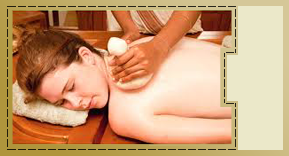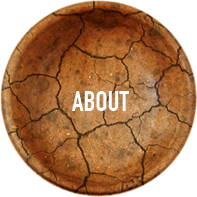Ayurveda in Sanskrit means the science of life. It is practiced globally today as a form of alternative medicine. In Sanskrit the word Ayurveda consist of the word ayus meaning longevity and veda meaning related to knowledge.
 |
|
|||||||||||||||
 |
Ayurveda is considered today as a form of complementary and alternative medicine (CAM) globally where several methods such as the use of herbs, massage, and yoga are applied on their own as a form of CAM treatment. Ayurveda is the oldest and most holistic medical system available on the planet today. It was placed in written form over 5,000 years ago in India. It was said to be a world medicine dealing with both body and the spirit based on the ancient wisdom of this healing system. It was put into writing into a body of scriptural literature called the Vedas - a large body of texts - originating in ancient Vedic literatures. Ayurveda explains the laws of nature that cause health or disease. Illness develops due to internal conditions (e.g., foods and liquids) or external conditions (e.g., seasons, lifestyle). The main factors that cause poor health is a result of imbalance as a result of poor digestion and weak immune system Improper digested food is retained in body with nutrients not absorbed leading to food decays and the formation of toxins. Ayurveda looks at people as individuals, not as a generic group and addresses the healing of the toot cause of an illness and not only the symptoms. Only natural therapies are used with no side effects. Ayurveda brings to life the concepts of preventive health care and health promotion. The principal goal is to help discover the knowledge of living and health. Food and diet plays an important role in creating the internal chemical environment. Ayurveda classical texts by Kerala traditional physicians assures an uninterrupted history of practicing the classical original therapies in all their authentic forms with the reputed Kerala preparatory therapies and the varieties of exclusive herbal formulations as a cornerstone of the treatment process. Meditation leads to self control in regulating the body system. Mind and body are in unison complemented by following a healthy diet with a focus by keeping clear of undesirable pleasures leading to the roots of longevity and health. Yoga provides a settled state to the body and uniting with the inner self. Yoga balances stress areas of the body and bring it to balance. Aryuveda and yoga goes hand in hand complimenting each other and helping the human body to lead a healthy and long life. Massage therapy regularly using oils and herbal lotions will rejuvenate the body cells and a key to good health. It opens the skin pores removing the dead cells from the body and allowing the skin to feel fresh and comfortable. Massage cleanses different toxins from the body channels, provides relief at both physical and mental levels to the body, nourishes the body tissues stimulating the internal functions, heals insomnia, exhaustion, weakness of nerves, unhealthy and dry skin, and laziness, povides lubrication to different mechanisms in the body parts and stimulates the enzymes increasing assimilation of food along with increases in the body fluids Ayurveda basic philosophy is based on five elements theory that is namely Air, Space, Earth, Fire and Water. These elements combine to form controlling forces or biological humours. Ayurveda Vaata as is responsible for active movements of different organs and parts of our body. They are 5 types namely • Praana - functions of brain and nervous system • Udaana - movements of the chest, diaphragm and voice box • Samaana - movements of the intestine along with digestion and absorption of food substances • Apaana - movements of the bladder, rectum, uterus • Vyaana- movements of all kinds of voluntary and involuntary muscles Diseases caused by the disorders of Vaata are asthma, epilepsy (fits) and other mental disorders, urticaria (a skin disease), viral fever (due to temperature changes), anaemia (lack of iron in blood), obesity (increased weight gain), diabetes, diarrhoea and constipation, thyroid and adrenal glands reduced functions. Ayurveda Pitta is responsible for the chemical reactions that take place in our bodies and are of five types • Paachaka due to digestive enzymes and other chemicals in the body • Ranjaka responsible for haemoglobin (the iron-containing pigment in blood) production • Alochaka responsible for the biochemical activity of the eye • Saadaka responsible for normal functioning of the mind • Braajakas responsible for removing waste products in the form of sweat and enhancing the natural glow of the skin. Diseases caused by the disorders of Pitta are toxic fevers, gastritis, vomiting, diarrhoea, jaundice, anaemia bronchitis, skin diseases associated with pus formation and all infections due to toxins, bacteria, viruses etc. Ayurveda Kapha refers to promotion or growth brought about by secretions of different types by the organs and are of 5 types • Kledaka refers to secretions by the mouth, stomach and intestines, which dissolve the food and destroy bacteria • Avalambika refers to secretions by the respiratory tract from the nose to the lungs and facilitates passing of air and flushes out foreign substances • Bodhakas the watery secretion of the glands around the taste buds of the tongue, which help in perceiving the taste. • Tarpaka refers to the cerebrospinal fluid which is a secretion surrounding the brain, and spinal cord providing nutrition to the brain and protects it from toxic substances. • Shleshaka is the fluid lying in the bones and joint spaces called as synovial fluid producing movements of bones and joints with ease. Diseases caused by the disorders of Kapha are common cold, infection of the lungs and other parts of respiratory system, diarrhoea due to infection, jaundice, enczema, pimples and other skin infections, arthritis (painful joints)/ rheumatic heart disease, swelling and infection of the kidneys, peritonitis, encephalitis, meningitis and other infections of the brain, benign tumours of different parts of body Ayurveda Dhaatu is a substance which is responsible for formation of basic structure of body. There are 7 types of dhaatus i.e. lymph, blood, muscle tissue, fat tissue, bone marrow, sperm and ovum. Constitution of the body is a primary means of assessing an individual Ayurveda treatment and therapy thereafter. After knowing your prakriti (body constitution) with the pulse examination, you can apply it in maintaining the health and counteracting the disease as it plays an important role in health planning. If we know our natural constitution according to vaata, pitta, and kapha, we can take care of our problems and defend against diseases. |









